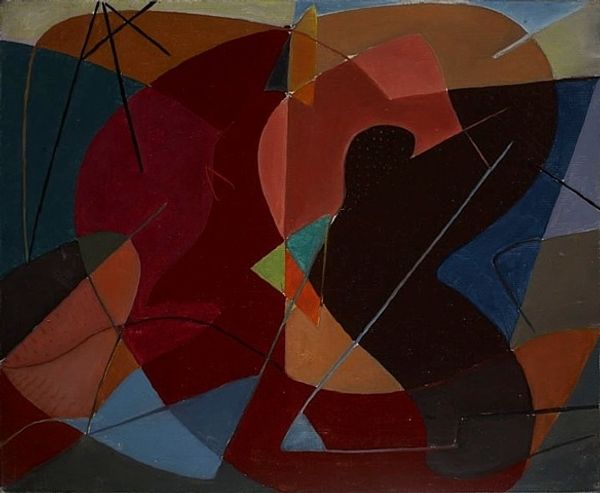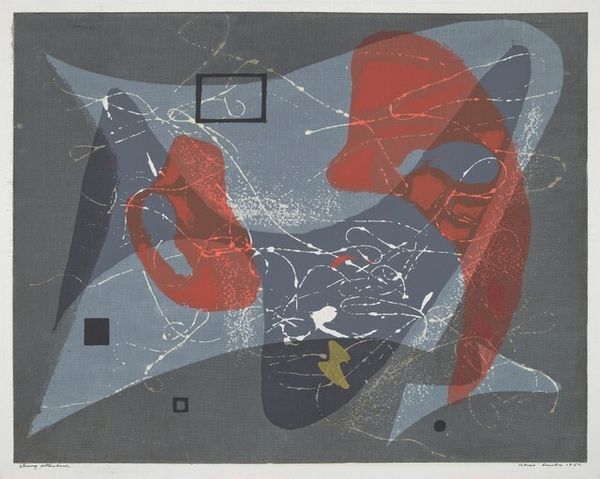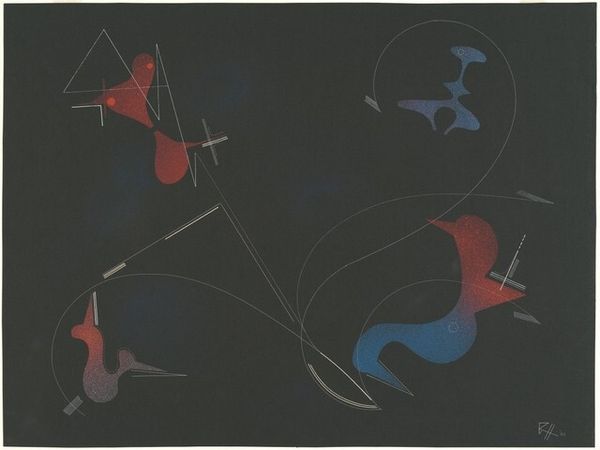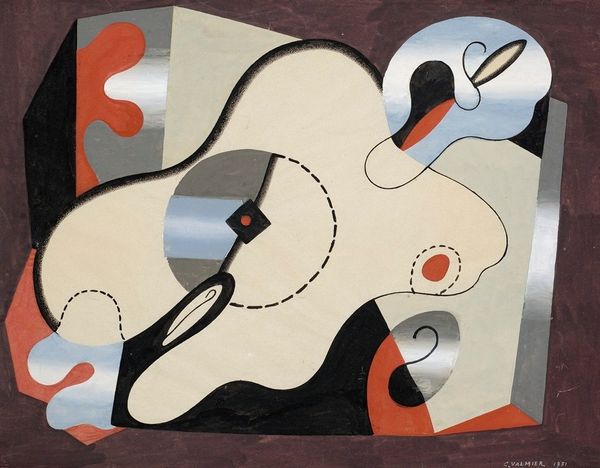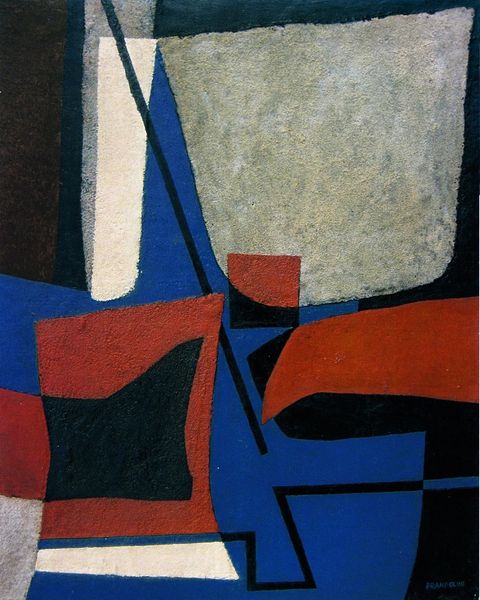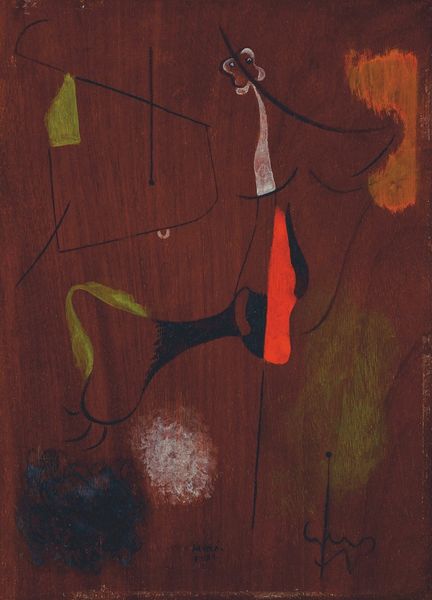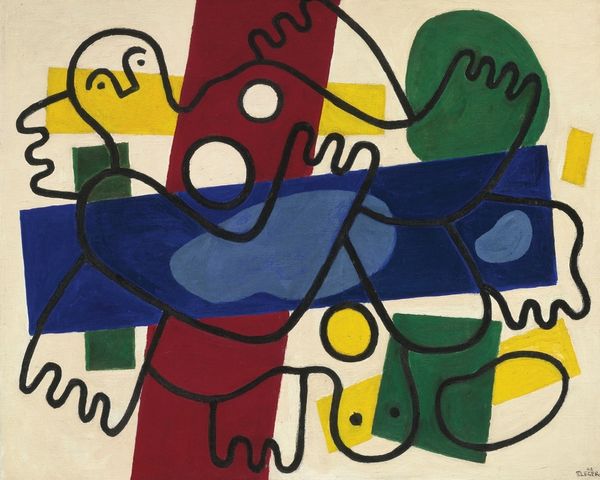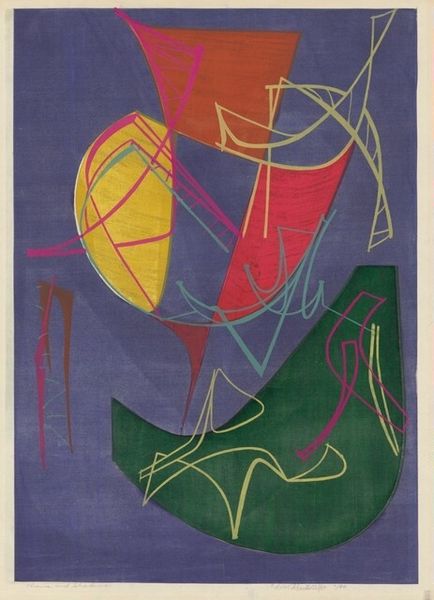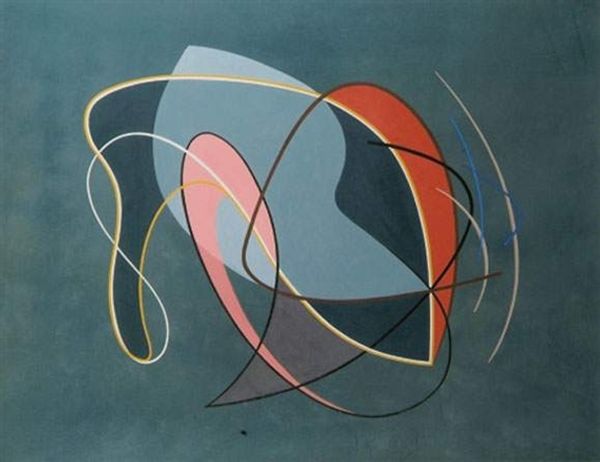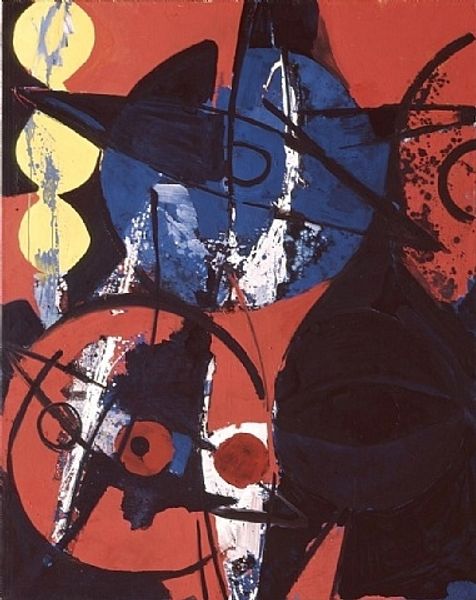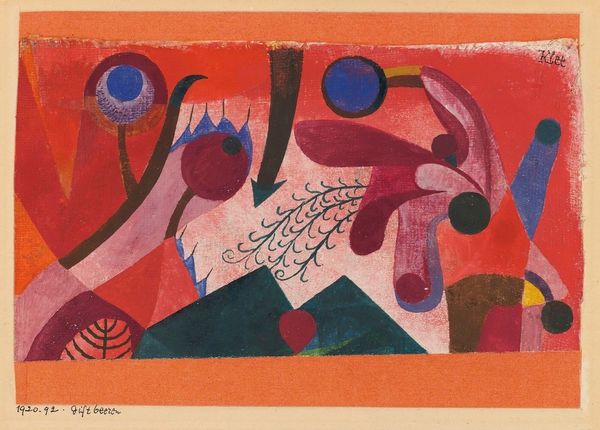
painting
#
abstract painting
#
painting
#
abstraction
#
line
#
modernism
Copyright: John Ferren,Fair Use
Editor: Here we have John Ferren's "Grazioso," painted in 1933. It’s an abstract piece—a captivating array of shapes and colours. What strikes me is how it almost seems to defy gravity with its floating forms. How do you interpret this work, particularly considering the time it was created? Curator: It’s crucial to understand the historical backdrop against which Ferren composed “Grazioso”. In 1933, the world was in economic turmoil, and politically, anxieties about rising fascism were growing. So, how do we situate this abstract language within those realities? It’s tempting to see abstraction as escapist, yet I would ask: might its emphasis on pure form and colour represent a quest for new modes of expression outside dominant, often oppressive, ideologies? Editor: That's fascinating! So, it's not just about aesthetics, but about forging a new visual language in a turbulent world? Curator: Precisely. The swirling lines and fragmented forms could be seen as a direct challenge to rigid, established orders. Furthermore, who had access to creating these languages, and whose voices were repressed? We can view Ferren's work through the lens of social and political unrest, prompting us to think about the painting as an assertion of artistic autonomy. It dares us to see beyond representation and embrace the power of pure visual expression during this complex time. Editor: It's incredible to consider this work as a reaction and statement. I'll definitely view it differently now. Curator: And thinking critically about how art intersects with power, identity, and historical context, reveals how much a seemingly ‘abstract’ work can tell us. Editor: Absolutely, it is more than just paint on canvas, it's a reflection of its time, pushing boundaries and asking questions. Thanks for providing the context.
Comments
No comments
Be the first to comment and join the conversation on the ultimate creative platform.
